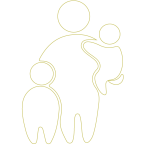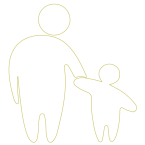Wellness Series - Part 1: Grief, Fear and Wellness
Welcome to a 3-Part Blog Series on Wellness.
Part 1 - Grief, Fear and Wellness
Part 2 - Major Life Changes and Wellness
Part 3 - Everyday Wellness
Part 1 - Grief, Fear and Wellness
What is Wellness?
According to a definition from Pfizer’s website: “Wellness is the act of practicing healthy habits on a daily basis to attain better physical and mental health outcomes, so that instead of just surviving, you're thriving. To understand the significance of wellness, it's important to understand how it's linked to health. According to the World Health Organization (WHO), health is defined as being ‘a state of complete physical, mental and social well-being and not merely the absence of disease or infirmity.’
Dimensions of Overall Wellness - Several key areas of your lifestyle are considered dimensions of overall wellness. The wellness dimensions include social connectedness, exercise, nutrition, sleep, and mindfulness. Each dimension has an impact on your physical and mental health. By making simple and healthy choices on a daily basis, you will be well on your way towards reducing stress, having positive social interactions, and achieving optimal wellness.”
Social Connectedness
If the grief is caused by the death of a loved one, the social connectedness to that person is removed. Traumatic loss disrupts attachment to the people you are connected to. If the grief is disenfranchised or if the loss is ambiguous, it can also decrease the amount of social support to cope with the loss.
Exercise
Common grief reactions include a decreased desire to participate in activities, including exercise as well as a decreased energy level.
Nutrition
When you are grieving you may find yourself at different ends of the spectrum when it comes to food. Some find solace in comfort foods, which are often the fatty, salty or sweet foods that make us feel good. Or you may experience a decreased appetite and/or no desire to eat.
Sleep
Regular sleep patterns, sleep hygiene, and habits are often disrupted by grief. You may find you are sleeping too much, too little, staying up late, going to bed early, getting up early, getting up late, or any combination of these and more.
Mindfulness
Cognitive grief reactions such as persistent thoughts about the loss, replaying “what if” over and over again, and thoughts about what will or will not happen in the future may take you out of the present moment and keep you stuck in the past or the future.
How are these above areas further impacted when grief intersects with fear?
Fear often causes people to freeze up and/or avoid the grieving process, which then creates stuck points. The fear of “not being well” can prevent you from making changes or trying new things. Wellness is often seen as the absence of fear and grief with fear and grief as something to be avoided. However, when wellness is viewed as a malleable condition, something constantly changing based on current circumstances, then it is vital for healing and recovery to occur. Healing and recovery from grief and loss often include processing, accepting, and/or integrating these different states of being.
Approach to Healing - Once you identify how the above areas have been affected, you can utilize this information to create an individualized approach to healing, such as:
Social Connectedness:
Seek out individual or group therapy, support groups, peer or activity groups aimed at bringing grieving folks together, such as:
Exercise
Consider signing up for exercise classes, joining a gym or finding an activity group to join. You can also do things at home or at work, such as taking the stairs instead of the elevator, doing 5-10 squats in between meetings or phone calls. Research shows that spending 20 minutes outside lifts the mood, so getting outside can also help!
Nutrition
Create opportunities for daily check-ins regarding nutrition by asking these two questions: Are you eating 3 balanced meals a day? Are you drinking enough water? Find opportunities to plan to succeed, such as looking at nutrition for the whole day/week rather than just one meal, especially if folks identify times of day/week when it’s difficult to access balanced eating.
Mindfulness
There’s no shortage of mindfulness apps and websites. This is both good, since one size does not fit all, and bad, as it can be overwhelming to find the right match. Mindfulness can occur in a variety of ways:
- A brief moment – recognize and orient yourself to the current time and place, using the 5-4-3-2-1 technique (identifying 5 things that you can see, 4 things that you can hear, 3 things that you can touch, 2 things that you can smell and 1 thing that you could taste/imagine the taste of), taking 3 deep breaths in and out, tensing and releasing your hand/foot.
- Move your body with kids: logging on to Go Noodle and playing some movement games with kids, Cosmic Kids Yoga website or Cosmic Kids Youtube Channel[AUR1] .
- Listen to a guided mediation by Tara Brach, Calm or Kristie Dahlia Home
- Digital Care Package from Sounds True
- Resources from the Center for Mind-Body
- A small sample of the many apps available: Calm, Insight Timer, Headspace, Smiling Mind, Stop, Breathe & Think, UCLA Mindful, Simple Habit
Thanks for joining the first part of the Wellness Blog Series. Continue learning:
Part 2 - Major Life Changes and Wellness
Part 3 - Everyday Wellness



